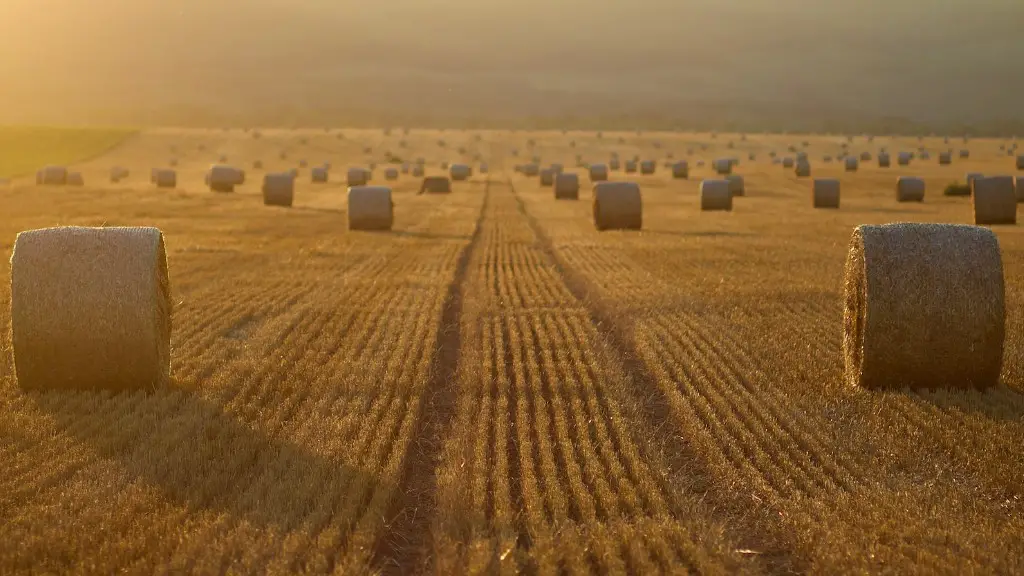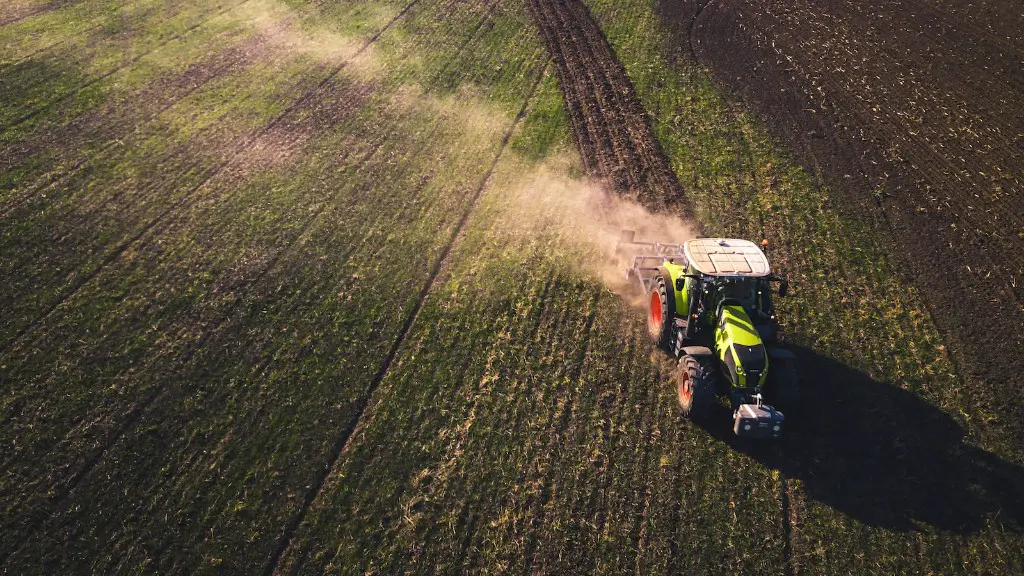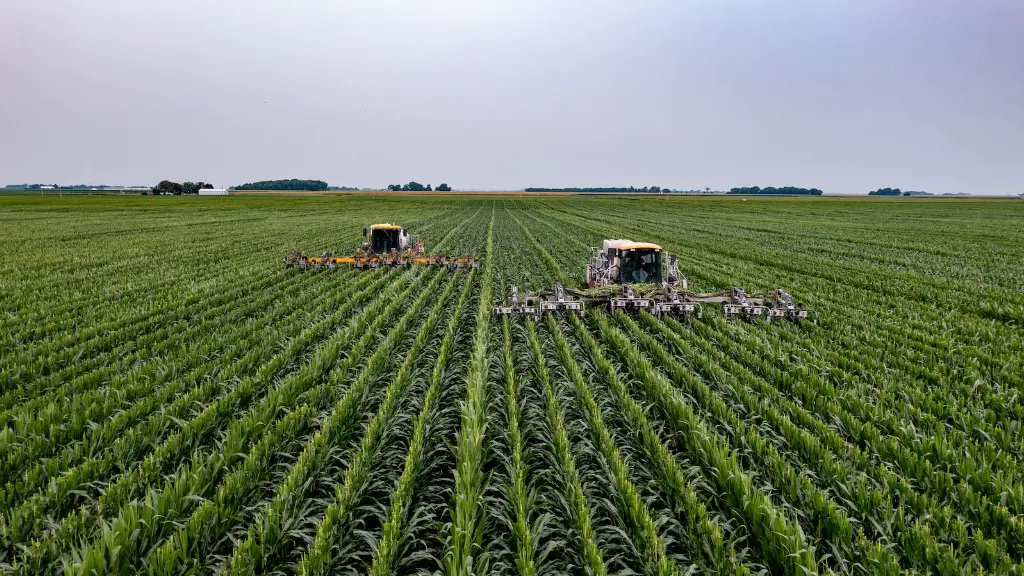Computer science has revolutionized the agricultural industry and helped to improve processes and yields significantly. From gathering data to taking inventory, computer science has become integral to the success of farmers and food producers. By leveraging the power of computing to optimize operations, designers, engineers, and farmers alike can work together to ensure a safe, efficient, and cost-effective agricultural industry.
Data gathering and data analysis are two of the most important uses of computer science in the agricultural world. By equipping farmers with high-resolution sensors and robust data analysis software, information on crop health, soil moisture, production yields, and other important metrics can be gleaned quickly and accurately. Additionally, environmental data such as water temperature, wind speed, and light intensity can be used to better understand the natural conditions of an agricultural region.
Computer science also plays a vital role in the monitoring and management of crops and livestock. Automated systems allow for the tracking of soil quality, pest and disease, and other vital indicators for a successful crop or livestock production. Computer systems are also used for agricultural robotics, which enable unmanned vehicles to monitor and perform tasks such as crop spraying and herding, among others.
Computer science is also beneficially utilized for the automation of the distribution and delivery of agricultural products. Machine learning algorithms enable smart harvesters, transporters, and storage systems to deliver goods to market quickly and securely while keeping costs as low as possible. By utilizing precision agriculture techniques, such as variable rate technology, agro-chemicals, and remote sensors, a more efficient use of energy and materials can be achieved.
Lastly, computer science helps farmers and food producers optimize their operations and maximize their profits. By utilizing smart applications, such as inventory and financial management systems, these producers can keep track of their supplies and budget their expenses more effectively. Additionally, predictive analytics can be used to aid in the assessment of potential markets and the creation of effective marketing plans.
Data Collection and Analysis
Data collection and analysis are fundamental components of computer science used to gather intelligence on the factors that affect agricultural production. For example, data collected from sensors can identify variations in soil composition, moisture levels, and other characteristics of a field or crop. Additionally, by correlating this data with weather patterns and other external factors, more precise decisions can be made as to when and how much to plant or water.
Data collected from on-farm tracking is used to set up field trials or measure effects on various methods of planting or harvesting. Computer simulation can then be used to determine the effects of the trials and evaluate the effects of various strategies. This can provide specific insights into which strategies best reduce capital costs, maximize yields, minimize environmental impact, and achieve maximum efficiency.
Data analysis is also used to enhance the performance of machines and equipment. For example, by using data collected from sensors, AI-based machines can be used to analyze crop health, soil composition, and other factors to optimize physical processes. This information can be used to better understand which types of equipment should be used to maximize the effectiveness of a given endeavor.
Finally, big data is used to build predictive models and forecast potential outcomes. By leveraging predictive analytics, agricultural producers can use powerful algorithms to measure the effects of different practices on yield production and cost efficiency, reducing the risks associated with changes in the business.
In conclusion, computer science is an essential tool for modern-day farming and food production operations. By leveraging data collection and analysis, automation, and predictive analytics, agricultural operations can become more streamlined and efficient. This increases the quality and quantity of production, providing growers with the means to maximize their profits and reduce their environmental footprint.
Automation and Robotics
Automation and robotics are an integral component of computer science and play a critical role in improving the yield and quality of agricultural products. Automation can be used to streamline processes such as tilling, sowing, harvesting, and packing, allowing for greater precision, consistency, and speed of production. Robotics can also be utilized in tasks such as monitoring crop and livestock health, stocking produce, the application of fertilizers and pesticides, and the detection of pests.
Computer vision is often used in robotics applications in agriculture, allowing machines to autonomously detect and react to changing environments. By leveraging the power of vision, machines can identify obstacles, detect and classify objects, track movement, identify weeds in crop rows, and optimize field navigation. This technology also allows machines to identify and react to potential problems, decreasing the amount of manpower needed to operate a farm efficiently.
In addition to robotics, computer science is also used for precision agriculture systems, which leverage the power of data to automate farming activities. This includes the usage of global positioning systems, remote sensing, and computer simulation to predict plant growth and monitor field environment changes. By utilizing this technology, predictive modeling can be used to generate an optimal planting plan, reduce costs, and increase yields.
Lastly, computers can be used to create artificial intelligence systems to help farmers create a more efficient and sustainable operation. Cognitive decision systems can be used to automate labor-intensive tasks, optimize the use of resources like water and fertilizers, and predict weather changes that may affect crop growth. Additionally, these systems can be used to optimize the timing of field trials and better understand the differences between various strategies.
In conclusion, automation and robotics provide tremendous advantages to food production and agricultural operations. By leveraging the power of computer science, these systems can increase the speed and accuracy of processes, reduce manual labor, and provide more efficient and sustainable operations. The utilization of computer science in the agricultural sector will certainly continue to evolve in the years to come.
Presicion Agriculture
Precision agriculture is the application of data-driven tools and practices to enhance agricultural production. By leveraging specialized sensors, computer imaging, and machine learning, precision agriculture has been able to increase yields, reduce labor costs, and limit environmental damage. By understanding the complexity of the natural environment and using input data to optimize and automate processes, producers can design and implement more efficient agricultural systems.
One of the most important technologies in precision agriculture is remote sensing. By utilizing satellite imagery and other data collected from airborne vehicles, producers can track the performance of their fields in real-time. This technology is used to evaluate soil characteristics, monitor crop health, analyze environmental conditions, and track pest outbreaks. By utilizing remote sensing, agricultural producers can identify problems before they occur and adjust their strategies to compensate for adverse conditions.
Precision agriculture also relies on intelligent algorithms and machine learning technologies to enhance agricultural efficiency. Farmers use complex algorithms to predict patterns, plan for the future, and optimize their operations. These systems use historical data to determine optimal levels of resources, labor, and capital to achieve maximum efficiency. Additionally, machine learning systems can be used to optimize farming processes, such as harvest scheduling and crop rotation to further enhance agricultural yields.
The use of computer science in precision agriculture also helps farmers and food producers maximize profits, reduce waste, and better manage resources. Decision-support systems can be used to generate forecasts, analyze markets, and better manage inventories. Additionally, predictive analytics can also be used to assess potential markets and create effective marketing plans. These systems leverage big data and artificial intelligence technologies to provide real-time insights and make smarter marketing decisions.
In conclusion, precision agriculture has transformed the world of food production, and computer science has been integral to its success. By utilizing remote sensing, machine learning, algorithms, and predictive analytics, producers can manage their operations more efficiently and increase their yields and profits. As computer science continues to advance, precision agriculture will undoubtedly become more accurate, efficient, and cost-effective.
Inventory and Financial Management
Inventory and financial management are an essential part of the agricultural industry and computer science plays a major role in these operations. By using computer-aided design (CAD) systems, producers can accurately track their inventory levels, automate orders of materials, and reduce costs by optimizing production and storage. Additionally, computer-based financial management systems can be used to manage capital investments, track expenses, and optimize resource allocation.
Inventory management systems are designed to help producers visualize their operations and plan for resource allocation. By leveraging the power of advanced computer graphics, software can be used to generate detailed simulations and analyze the effects of different production strategies. The data collected from such simulations can aid in decisions regarding staffing, yield prediction, and cost analysis. Additionally, inventory management systems can create forecasts of potential shortages or surpluses and help producers understand the flow of resources.
Financial management systems are also essential components of computer science used in agriculture. Financial management systems provide producers the means to compile budget statements, monitor profit, and cash flow. By utilizing predictive analytics, producers can assess the risks, returns, and other economic effects of proposed projects. Additionally, financial management systems can be used to measure the profitability of each strategy and to effectively allocate resources.
In conclusion, computer science is an invaluable asset for the successful management of agricultural operations. By leveraging CAD systems and financial management software, producers can create efficient production systems, optimize resource allocation, and increase overall profit margins. As computer science continues to evolve, its usage in the agricultural sector will undoubtedly become more commonplace.
Conclusion
Computer science has revolutionized the agricultural industry and enabled a more efficient, cost-effective, and sustainable way of producing food. By leveraging data collection and analysis, automation and robotics, precision agriculture, and financial and inventory management systems, producers can increase yields and optimize their operations. Utilizing computer science in the agricultural world has enabled producers to increase their profits, reduce their environmental impact, and better serve their customers.





